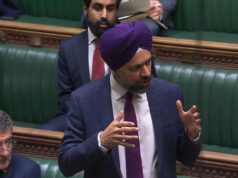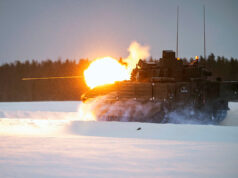British Army medics have provided urgent medical assistance to 86 patients in the first 24 hours of opening a medical treatment facility established to support earthquake relief efforts in Turkey.
16 Medical Regiment, supported by personnel from the RAF’s Tactical Medical Wing, swiftly deployed to set up the medical treatment facility in Turkoglu, located close to the epicentre of the earthquake.
Since its establishment on the morning of 15th February, the medical team has attended to a diverse range of patients, including men, women, and children, who presented various medical conditions ranging from physical injuries such as broken bones to mental health concerns.
The team has been working tirelessly to provide swift and effective medical care to those in need.
Lieutenant Colonel Mark Wyldbore, 16 Medical Regiment’s clinical director, was quoted in a press release as saying:
“We’ve seen the full range of what you’d expect at a GP or minor injuries centre. We’ve treated fractures and infected wounds – some of which happened in the earthquake, and some are just what happens when people are living outdoors for a prolonged period – as well as everyday gastro-intestinal problems, women’s health, and sick children.
There is a university hospital 30 minutes away to refer complex cases to, but we are doing whatever we can to take pressure away from the local healthcare system. As an example, we had a man report with an abscess – we did a minor surgical procedure to lance it under anaesthetic, and two hours later he was on his way.”














A first-class job, keep up the good work.
No longer able to attach images?
Hi folks hope all is well.
Once more we see the magnificent UK military stepping up.
Not bad considering we are a second rate power. Obviously I’m referring to that comment by the supposedly unnamed US General?
Cheers,
George
Well done all that help her. Can we also go across the border and do it in Northern Syria? That is what army is for I suspect you would be inundated for help.
Using the military medical services for disaster relief is good practise. But it is not what they are for.
The current military medical services, are only a fraction of their former size. Top quality for sure thanks to all the practise in Afghanistan and Iraq. But very easily swamped if they encounter a serious conflict. The cutbacks and “rationalisation” was and continues to be severe.
Given the size of the Army has shrunk overall, it’s only common sense that the RAMC would shrink too, or you’d have a way too big Med Corps for a very small army.
That being said the RAMC has done a very good job of keeping a solid force structure that can scale and support multiple deployments of the various elements of the British Army, with 4 Medical Regiments and 2 MMR’s supporting 6 Fighting Brigades, plus of course the reserves, which the RAMC has a substantial establishment of.
Thanks for the reply Dern, I detect some actual experience written between the lines of your comment.
The shrinking of the army in any way shape or form was NOT common sense, on any level. It rang the death knell for the majority of our military industrial complex and the loss of it’s skilled labour force. It drove the regular army below the economical self sustaining threshold. Over worked and under paid with limited promotion prospects. In many ways has added to the current recruiting predicament. The so called post cold war peace dividend was a dangerous delusion perpetrated by myopic politicians. More determined to buy votes than perform their primary duty, defence of the realm. But you are correct in saying a pitifully small standing armed force, only needs an equally slashed medical corp. Yes, they do a fine job and for good reasons. Let me explain for those who do not share your experience Ma’am.
The considerably larger Cold War medical services were 20% regular forces and 80% TAVR. As is the case today, many members of the volunteer reserves actually worked for the NHS in one way or another. However, there were sufficient TA medical units to train none NHS staff to the required levels. TA soldiers from all walks of life were trained to CMT1 level by well qualified medics. They quite often took placements with the NHS in A&E or the ambulance service. Others adopted lesser medical roles in society and industry. The benefits to society were considerable but often understated.
Today by contrast, the majority of current RAMC/QARANC reserves actually belong to the NHS. They are actively sifted from any applicants because their disproportionate hands on experience is vital when deployed. As a result, full mobilisation during a major conflict, would severely strip the already stretched NHS to breaking point. I hope that better explains my previous comment and the obvious common-sense consequences of such small AMS.
Well said George, I totally agree with you, the British army navy and airforce, may not be the largest, but by far the finest!
Shouldn’t we send HMS Argus down there to assist also?
*RFA not HMS.
It’s 100 miles from the nearest sizeable Port. RFA Argus provides the Navies only Role 3 Facility, but the British Army maintains 2 Regular Role 3’s of it’s own (22 and 21 Multirole Medical Regiments), so far more sensible to send one of those units than Argus in this case.
I’ll be honest, we should collectively as NATO have put the screws to Turkey a bit.
Medical Aid? Sure.
Just quickly vote to accept Finland and Sweden into NATO first.
Withholding life saving aid, pending a positive political outcome. I’m shocked but only a little.
Well said.